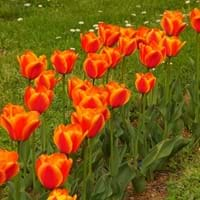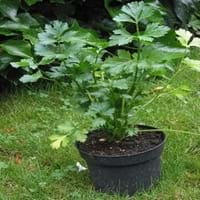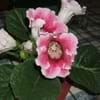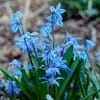Life Span
Annual
Annual or Biennial
Type
Bulb or Corm or Tuber
Vegetable
Origin
Europe, Turkey, Iraq, Iran, Asia, China
Europe, Northern Africa, Asia
Types
Parrot Tulips, Triumph Tulips, Darwin Hybrid Tulips
Not Available
Number of Varieties
Not Available
Habitat
Mountains, Temperate Regions
Coastal Regions, Marshy ground, Wet ground
USDA Hardiness Zone
4-8
Not Available
Sunset Zone
21,22
Not Available
Habit
Clump-Forming
Upright/Erect
Flower Color
White, Yellow, Red, Green, Purple, Orange, Pink, Rose, Coral, Peach, Burgundy, Plum, Bronze
White
Flower Color Modifier
Bicolor
Bicolor
Fruit Color
Green, Tan
Tan, Brown
Leaf Color in Spring
Green
Light Green
Leaf Color in Summer
Light Green
Green, Light Green
Leaf Color in Fall
Several shades of Green
Green, Light Green
Leaf Color in Winter
Light Green
Not Available
Leaf Shape
Oblong
Irregular
Plant Season
Spring
Spring, Summer
Sunlight
Full Sun, Partial Sun
Full Sun
Type of Soil
Loam, Sand
Loam
The pH of Soil
Neutral
Neutral, Alkaline
Soil Drainage
Well drained
Well drained
Bloom Time
Early Spring, Spring, Late Spring
Late Spring
Tolerances
Drought, Shade areas
Drought
Where to Plant?
Ground, Pot
Container, Ground
How to Plant?
From bulbs, Seedlings
Seedlings, Transplanting
Plant Maintenance
Medium
Low
Watering Requirements
Do not water frequently, Does not require lot of watering
Keep ground moist, Requires regular watering
In Summer
Not so frequently
Lots of watering
In Spring
Moderate
Moderate
In Winter
Average Water
Average Water
Soil pH
Neutral
Neutral, Alkaline
Soil Type
Loam, Sand
Loam
Soil Drainage Capacity
Well drained
Well drained
Sun Exposure
Full Sun, Partial Sun
Full Sun
Pruning
Cut leaves after fall, Remove damaged leaves, Remove dead branches, Remove dead leaves
Remove damaged leaves, Remove shoots
Fertilizers
9-9-6
Less fertilizing
Pests and Diseases
Aphids, Gray mold, Nematodes, Red blotch, Snails
Bacteria, Downy mildew, Fungal Diseases, fungus, Mosaic viruses, Pink Root, Red blotch
Plant Tolerance
Drought, Shade areas
Frost
Flower Petal Number
Single, Double, Semi-Double
Single
Fragrant Bark/Stem
No
Yes
Foliage Texture
Medium
Coarse
Foliage Sheen
Matte
Glossy
Attracts
Aphids, Caterpillar, Mites, Rodents, Squirrels
Insects, Mice, Rodents, Spider Mites
Allergy
contact allergic dermatitis
Irritation to stomach
Aesthetic Uses
Beautification, Bouquets, Cottage Garden, Showy Purposes
Not Available
Beauty Benefits
Not Available
Good for skin, Improve skin condition, Moisturizing, Skin Problems
Environmental Uses
Air purification
Air purification, Food for animals, Food for birds, Food for insects
Medicinal Uses
Skin Disorders, Skin irritation
Cancer, Combats Stress, Eye Problems, High blood pressure, High cholestrol, Indigestion, Inflammation, Weight loss
Part of Plant Used
Flowers
Leaves, Seeds
Other Uses
Showy Purposes, Used As Food, Used as Ornamental plant, Used for its medicinal properties
Employed in herbal medicine, Oil is used in perfume, soaps, creams, etc., Used As Food, Used for its medicinal properties, Used as a spice
Used As Indoor Plant
Sometimes
Yes
Used As Outdoor Plant
Yes
Yes
Garden Design
Bedding Plant, Container, Cutflower, Edging, Feature Plant, Foundation, Mixed Border, Rock Garden / Wall
Container, Edible, Herb / Vegetable
Botanical Name
TULIPA
APIUM graveolens
In Portuguese
Tulipa
Aipo
Phylum
Magnoliophyta
Tracheophyta
Class
Magnoliopsida
Magnoliopsida
Family
Liliaceae
Apiaceae
Clade
Angiosperms, Monocots
Angiosperms, Asterids, Eudicots
Tribe
Not Available
Apieae
Subfamily
Lilioideae
Apioideae
Number of Species
Not Available
Importance of Tulip and Celery
Want to have the most appropriate plant for your garden? You might want to know the importance of Tulip and Celery. Basically, these two plants vary in many aspects. Compare Tulip and Celery as they differ in many characteristics such as their life, care, benefits, facts, etc. Every gardener must at least have the slightest clue about the plants he wants to plant in his garden. Compare their benefits, which differ in many ways like facts and uses. The medicinal use of Tulip is Skin Disorders and Skin irritation whereas of Celery is Cancer, Combats Stress, Eye Problems, High blood pressure, High cholestrol, Indigestion, Inflammation and Weight loss. Tulip has beauty benefits as follows: Not Available while Celery has beauty benefits as follows: Not Available.
Compare Facts of Tulip vs Celery
How to choose the best garden plant for your garden depending upon its facts? Here garden plant comparison will help you to solve this query. Compare the facts of Tulip vs Celery and know which one to choose. As garden plants have benefits and other uses, allergy is also a major drawback of plants for some people. Allergic reactions of Tulip are contact allergic dermatitis whereas of Celery have Irritation to stomach respectively. Having a fruit bearing plant in your garden can be a plus point of your garden. Tulip has no showy fruits and Celery has no showy fruits. Also Tulip is not flowering and Celery is not flowering . You can compare Tulip and Celery facts and facts of other plants too.





